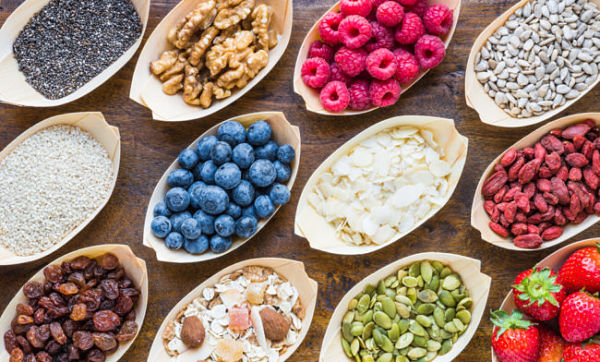Some days, it seems like everywhere you turn, someone’s talking about superfoods. But what’s the real story? Are these foods worth the hype?
“Superfoods” earned their name because they contain high doses of things that are good for you, including vitamins, minerals and antioxidants. So, the quick answer is: Yes, they’re worth the hype. Incorporating superfoods into your diet will get you more “bang for your buck” by packing more nutrients in each bite.
And the best news about superfoods? With new fruits and vegetables fresh each season of the year, these antioxidant-laden foods are available throughout the year.
Let’s take a look at some seasonal powerhouses you can pack into your grocery cart (or basket at the farmers’ market) this spring.
Asparagus
This veggie is packed with chromium, fiber, folate, and vitamins A, C, E and K. The chromium offers a particular benefit — it helps insulin transport glucose through the bloodstream and into the body’s cells.
In addition, asparagus also boasts a large number of antioxidants, which have been found to help slow the aging process and boost your brain power.
Berries
No matter what variety of berry you eat, you’ll reap the benefits. Berries contain phytochemicals, which help keep the body’s cells protected and functioning.
Blueberries include antioxidants that help keep memory sharp, while raspberries contain ellagic acid, which has anti-cancer properties. Strawberries are packed with vitamin C. In fact, a half cup of sliced strawberries has 82 percent of the daily recommended dose.
Need another reason to eat berries? A study by Harvard researchers found that participants who ate one serving of blueberries or two servings of strawberries a week experienced less mental decline than those who did not eat berries.
Salmon
Omega-3 fatty acids have been shown to benefit the body in a variety of ways, including lowering cholesterol, helping the body recover faster after activity and building brain power. Salmon is packed with these fatty acids, including one particular variety called EPA.
EPA has been shown to have an added benefit — it helps blocks UV-induced enzymes that cause the skin to show signs of aging.
Spinach
Looking for a non-meat food packed with iron? Look no further. Half a cup of cooked spinach contains 3 milligrams of iron, which is about 17 percent of your daily recommended intake.
And iron isn’t the only nutrient in spinach. This superfood also contains a good amount of fiber, folate, magnesium, potassium, zinc, and vitamins A, C, E and K.
Walnuts
This tree nut contains a large amount of tryptophan, an amino acid used by the body to help create the “feel-good” hormone serotonin. It also has a number of brain-healthy nutrients, including folate, vitamin E and omega-3 fatty acids.
The best part? Walnuts are digested slowly, so they’ll help you stay full for a while.
Looking for other nutritional information? Learn about Erlanger’s commitment to lifestyle and preventative medicine. Plus, shop our mini-market for fresh produce when The Chattanooga Market comes to Erlanger East Hospital each Wednesday from 10:30 AM – 1:30 PM.







